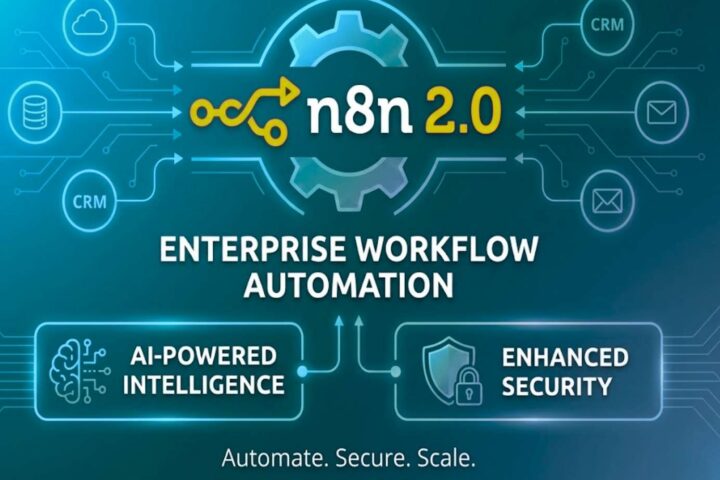The pandemic, armed conflicts and natural disasters have again brought to the forefront the importance of digital services delivery. While governments across the world are struggling to strengthen their public digital services, it is clear that changes or transformations related to digitalization must start with a very simple yet crucial step – the identification of current state of affairs and the assessment of digital maturity levels.
In a fast paced world, global citizens expect quick, simple and convenient access to government information and services. When referring to “going digital”, the Organization for Economic Co-operation and Development (OECD) has stressed the need to accomplish citizen well being. Enhancing access, increasing effective use, and social prosperity are amongst the goals in the proposed framework. The benefits of digitization also include improved internal efficiency and productivity, better collaboration among government departments and reduced labor costs.
Nevertheless, governments, and especially those in developing or emerging countries, face a plethora of obstacles in their path to digitalisation of public services. But, as a result of recent world events such as the Covid-19 pandemic and the war in Ukraine and its devastating humanitarian crisis, it has become evident that the benefits of digitalisation of public services outweigh these challenges. Furthermore, most institutions do not necessarily have to start digitisation from scratch. Many of them do possess certain levels of digital amenities albeit users are rarely satisfied with the levels of service. Limited accessibility, an inadequate number of offered services, complex and semi-digital offerings requiring occasional in-person interactions, and a lack of interoperability are all factors affecting the current levels of service.
Government projects intended to digitize processes related to business incorporation, registration and reporting, child birth or marriage registration, taxes and other payments , application for social security benefits and countless others, are commonly complex to plan and execute and many of them are destined to fail. According to some research, almost one in three such projects will fail while 50-60% will partially fail. Only 1 in 5 will be considered a success over time.
Though there are many various factors that influence the success of any governmental digitization project, the first steps are crucial and it’s highly important to ensure they are done correctly.
The team of experts at NRD Companies addresses the shortcomings of many digitization projects and offers a “how to succeed” prescription and an introduction to the company’s three leading and streamlined principles — Measure. Target. Act.
Ieva Zilioniene, Consulting Business Lead at NRD Companies advises “To begin with, it is essential to clearly understand the current status , and thus assess the existing digitization level of a particular e-service (Measure). Then, you have to Target , based on analysis and consideration of citizens’ real life needs and expectations, define what you want to achieve , and develop a clear roadmap and a holistic approach towards improvement. That would include efforts to reengineer existing processes, transform current traditional ways and methods in which your institution operates in , and change regulatory and legislative frameworks. Once you Act – develop a digital service, you must choose technological tools wisely too, as these have to be easy to use, and enable you to further improve your digital service in the future, based on further user needs and recommendations. Low-code – and simplified e-service provisioning platform that requires no programming skills provides a good example of how this can be achieved ”.

Service Digitalisation Level Assessment tool
NRD Companies, a global group of information technology companies, specializing in the creation of GovTec and Fintech solutions and the provisioning of subject matter consultancy services, has recently launched a free of charge, intuitive, fast and easy to use Service Digital Maturity Assessment tool which is based on the European Union methodological approach, where a 5-level “Online Sophistication” measurement model is used to assess digital services levels. This model enables institutions to implement a quick and easy “diagnosis” of their service’s current status, and to define a vision for the future. However, the EU model was developed in 2001 and last reviewed (when “Level 5” was introduced) in 2010. NRD Companies updated the concepts and definitions of each of the levels, to include the progressive characteristics of digital services, and has provided simple examples to make the tool easy to understand and to apply in practice.
“The new assessment tool , which takes under 5 minutes to complete, enables government departments or any other stakeholder to assess their public services and identify their digital maturity level. This assessment together with the free guidelines made available after completing the assessment, serves as a valid indicator of what improvements should be made in the existing public service, to make it an exemplary digital one . ” adds Zilioniene.
NRD Companies has formulated seven essential quality characteristics for “quality” digital services. It is user-oriented, based on service delivery process re-engineering and automated collection of various required data from various Governmental registers and information systems, accessible through a one-stop-shop and multichannel, related to the user’s “life-events”, based on the Government as a Platform concept (GaaP), and open to technological innovations
Zilioniene points out that these seven characteristics must be followed and realized, from the initial planning, the re-design stage of the existing processes to the implementation of the technological solutions. This enables institutions to focus their attention on the factors that make the result – the new digital service – a high quality one. To implement these characteristics, legal, organizational, procedural and technological changes must be implemented throughout the transformation process.
Conclusion
“In our experience, governments often face enormous pressure to appease their constituents’ expectations regarding service delivery. Government reputation depends on its “digital appearance ” – the way it is represented digitally, through its portals, services, and interactions with citizens on-line. People expect to accomplish things easily when going digital. Such expectations are formed as a result of consumer dealings with global brands, the likes of Netflix, Amazon, Google, Facebook, Bolt and many others that offer timely and seamless customer experiences. And they want the same experience when they have to interact with their governments. That is why we have developed simple yet practical guidelines to help public sector representatives navigate through the public services digitization process, by making a good, well thought out start. The assessment tool helps define the existing status and provides guidelines for transformation. Of course, we always welcome the opportunity to help or lead this process as it is rather complicated but definitely worthwhile .” concludes Zilioniene.
The online assessment, at the end of which users are provided with a maturity score is now freely available at https://nrd-companies.involve.me/services-digitalisation-level-assessment-copy
Along with the score, institutions are also offered to download Practical Guidelines for starting the digitalisation of public services.
https://www.nrdcompanies.com/en/practical_guidelines_for_starting_the_digitalisation_of_public_services/











